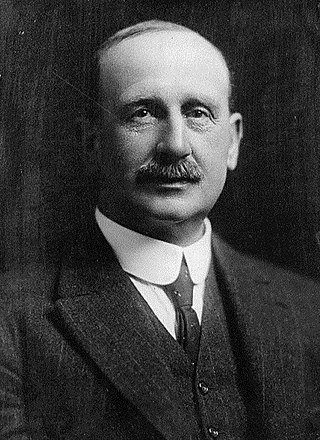Related Research Articles
The 2nd New Zealand Parliament was a term of the Parliament of New Zealand. It opened on 15 April 1856, following New Zealand's 1855 election. It was dissolved on 5 November 1860 in preparation for 1860–61 election. The 2nd Parliament was the first under which New Zealand had responsible government, meaning that unlike previously, the Cabinet was chosen by Parliament rather than by the Governor-General of New Zealand.

The Mayor of Auckland is the directly elected head of the Auckland Council, the local government authority for the Auckland Region in New Zealand, which it controls as a unitary authority. The position exists since October 2010 after the amalgamation of various territorial authorities. The mayor is supported by a deputy mayor.

Capital punishment – the process of sentencing convicted offenders to death for the most serious crimes and carrying out that sentence, as ordered by a legal system – first appeared in New Zealand in a codified form when New Zealand became a British colony in 1840. It was first carried out with a public hanging in Victoria Street, Auckland in 1842, while the last execution occurred in 1957 at Mount Eden Prison, also in Auckland. In total, 85 people have been lawfully executed in New Zealand.
City of Auckland was a New Zealand electorate formed for the election of 1853. It existed from 1853 to 1860, and from 1890 to 1905.

The Auckland Province was a province of New Zealand from 1853 until the abolition of provincial government in 1876.

Major General Robert Henry Wynyard was a British Army officer and New Zealand colonial administrator, serving at various times as Lieutenant Governor of New Ulster Province, Administrator of the Government, and was the first Superintendent of Auckland Province.
Communities and Residents (C&R) is a right-leaning local body ticket in Auckland, New Zealand. It was formed in 1938 as Citizens & Ratepayers, with a view to controlling the Auckland City Council and preventing left-leaning Labour Party control. It controlled the council most of the time from World War II until the council was merged into the Auckland Council in 2010. It changed its name from "Citizens & Ratepayers" to "Communities and Residents" in 2012.

Auckland Central is a New Zealand electoral division returning one member to the New Zealand House of Representatives. The electorate is currently represented by Chlöe Swarbrick, a member of the Green Party; she has represented the seat since 2020.

City Vision is a centre-left coalition of two political parties, the New Zealand Labour Party and the Green Party of Aotearoa New Zealand, and community independents who contest Auckland Council elections every three years. They have usually caucused in affiliation with Labour Party councillors and progressive independents.
The former New Zealand parliamentary electorate on the western inner city of Auckland, was known as City of Auckland West from 1861 to 1890, and then Auckland West from 1905 to 1946.

Auckland Council is the local government council for the Auckland Region in New Zealand. It is a territorial authority that has the responsibilities, duties and powers of a regional council and so is a unitary authority, according to the Local Government Act 2009, which established the council. The governing body consists of a mayor and 20 councillors, elected from 13 wards. There are also 149 members of 21 local boards who make decisions on matters local to their communities. It is the largest council in Oceania, with a $3 billion annual budget, $29 billion of ratepayer equity, and 9,870 full-time staff as of 30 June 2016. The council began operating on 1 November 2010, combining the functions of the previous regional council and the region's seven city and district councils into one "super council" or "super city".
Wellington Country was a former parliamentary electorate in the Wellington Region from 1853 to 1860 and then 1871 to 1881. The seat covered Miramar, Mākara, Porirua, the Kāpiti Coast and the Horowhenua District.
Marsden was a former parliamentary electorate, in the Whangarei District and in the Northland Region of New Zealand, which existed from 1858 to 1972. Upon its abolition, Marsden was replaced with the Whangarei electorate.
Pensioner Settlements was a 19th-century parliamentary multi-member electorate in the Auckland region of New Zealand, from 1853 to 1870.
Northern Division was a two-member parliamentary electorate in the Auckland Region, New Zealand from 1853 to 1870.
Suburbs of Auckland was a parliamentary electorate in Auckland, New Zealand, from 1853 to 1860.

The 2010 Auckland local elections took place from 17 September until 9 October and were conducted by postal vote. The elections were the first since the merger of the seven councils and elected the new Auckland Council, composed of the mayor and 20 councillors, and 149 members of 21 local boards. It also elected 21 district health board members and 41 licensing trust members.
The 1858 Wellington Country by-election was a New Zealand by-election held in the single-member electorate of Wellington Country during the 2nd New Zealand Parliament on 29 July 1858, following the resignation of Dudley Ward. The election was won by Alfred Brandon, who beat the only other candidate, Francis Bradey, easily.
The 1875 City of Auckland West by-elections were two by-elections held in the City of Auckland West electorate in Auckland, following two resignations during the 4th New Zealand Parliament

The 1905 Auckland City mayoral election was part of the New Zealand local elections held that same year. In 1905, elections were held for the Mayor of Auckland. The polling was conducted using the standard first-past-the-post electoral method.
References
- ↑ "Local Intelligence". Daily Southern Cross. Vol. XV, no. 1130. 27 April 1858. p. 3. Retrieved 2 May 2013– via Papers Past.